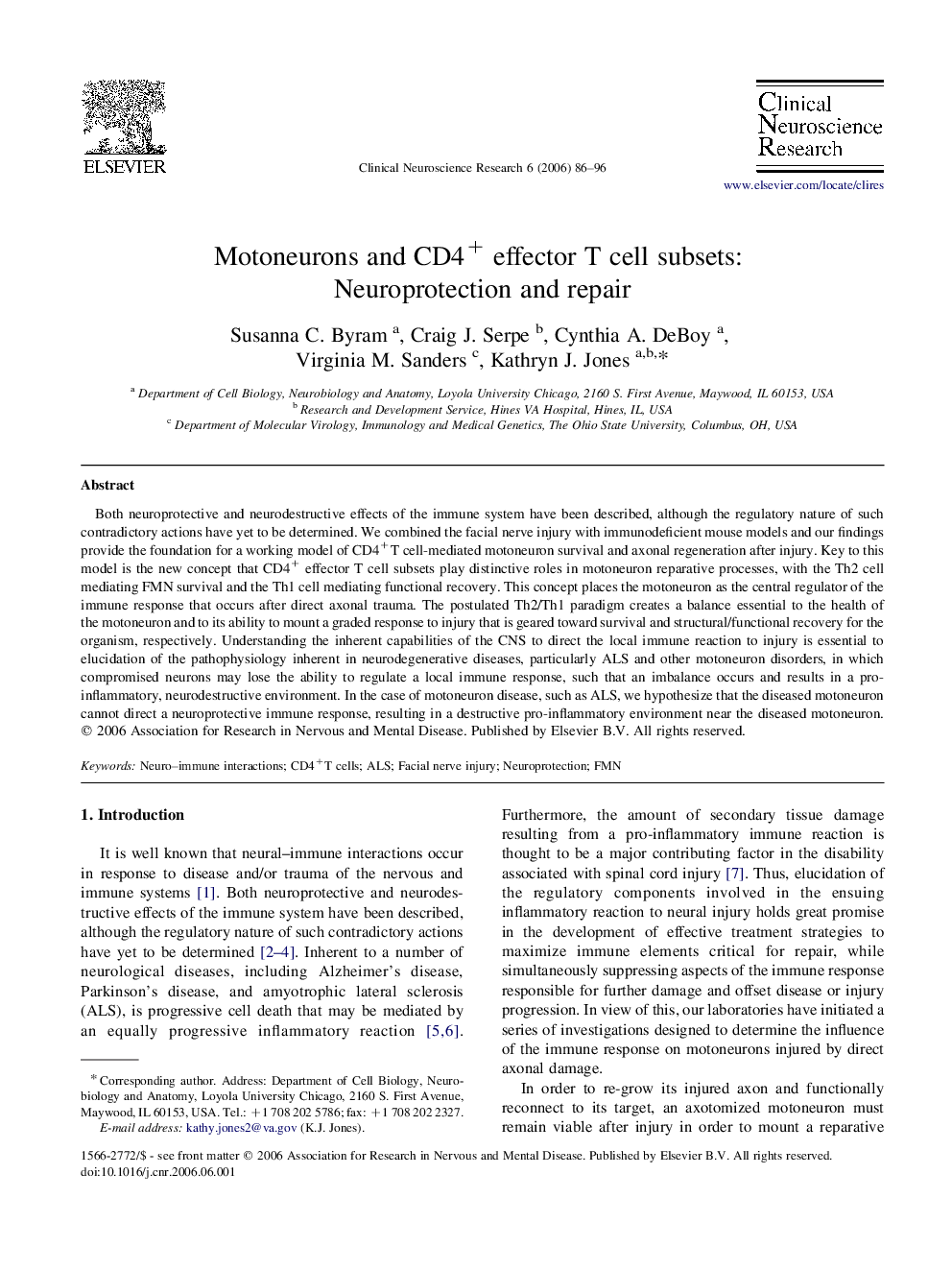| Article ID | Journal | Published Year | Pages | File Type |
|---|---|---|---|---|
| 3049262 | Clinical Neuroscience Research | 2006 | 11 Pages |
Both neuroprotective and neurodestructive effects of the immune system have been described, although the regulatory nature of such contradictory actions have yet to be determined. We combined the facial nerve injury with immunodeficient mouse models and our findings provide the foundation for a working model of CD4+T cell-mediated motoneuron survival and axonal regeneration after injury. Key to this model is the new concept that CD4+ effector T cell subsets play distinctive roles in motoneuron reparative processes, with the Th2 cell mediating FMN survival and the Th1 cell mediating functional recovery. This concept places the motoneuron as the central regulator of the immune response that occurs after direct axonal trauma. The postulated Th2/Th1 paradigm creates a balance essential to the health of the motoneuron and to its ability to mount a graded response to injury that is geared toward survival and structural/functional recovery for the organism, respectively. Understanding the inherent capabilities of the CNS to direct the local immune reaction to injury is essential to elucidation of the pathophysiology inherent in neurodegenerative diseases, particularly ALS and other motoneuron disorders, in which compromised neurons may lose the ability to regulate a local immune response, such that an imbalance occurs and results in a pro-inflammatory, neurodestructive environment. In the case of motoneuron disease, such as ALS, we hypothesize that the diseased motoneuron cannot direct a neuroprotective immune response, resulting in a destructive pro-inflammatory environment near the diseased motoneuron.
